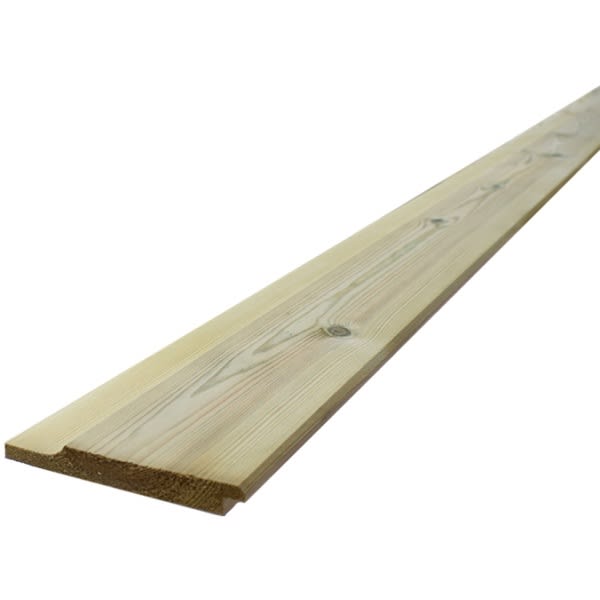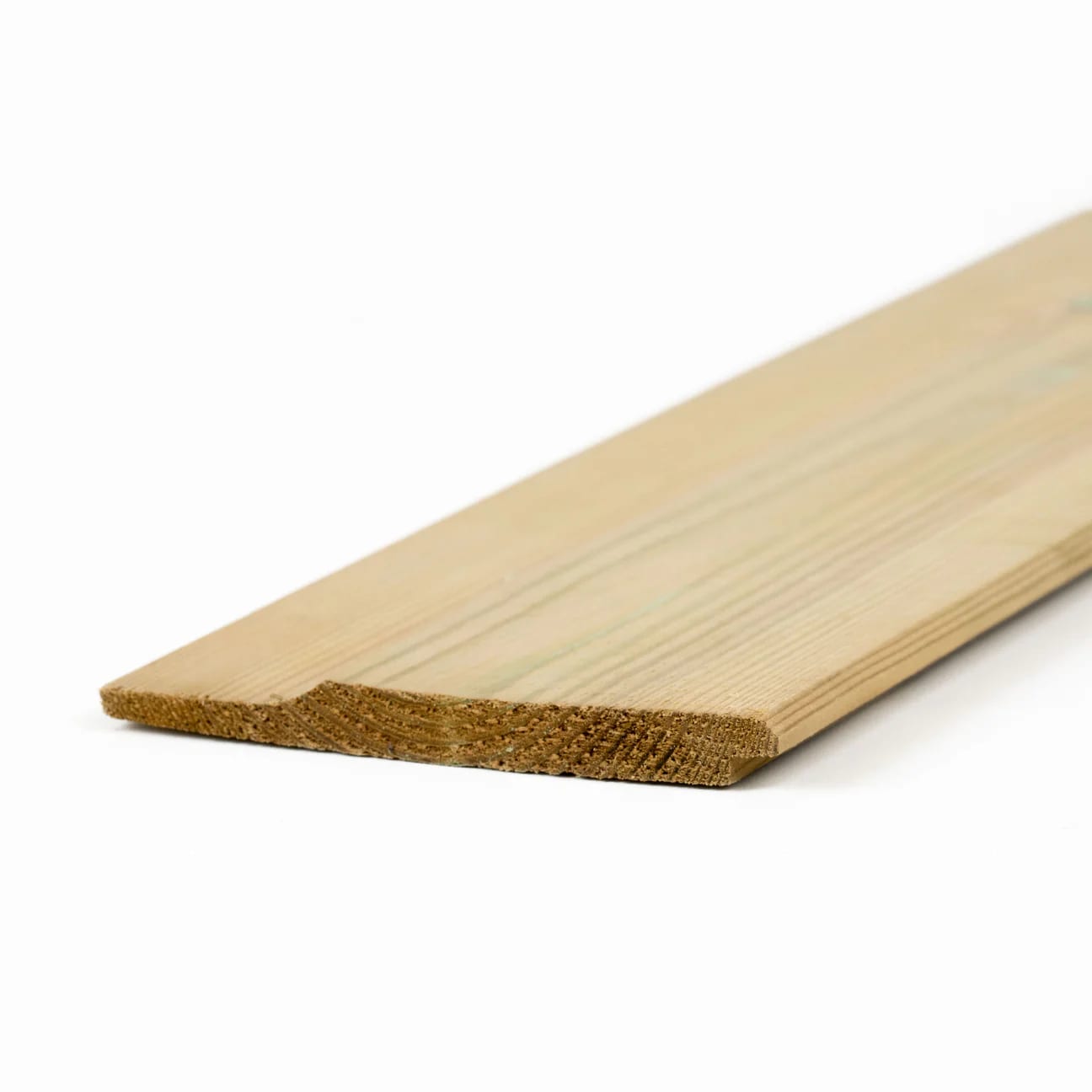Cladding
(11 Products)Cladding is a non-load-bearing layer fixed to the exterior of a building. Its primary function is to protect the structure from environmental exposure - wind, rain, UV, and temperature extremes - while also defining the building’s external appearance. Installed over a structural frame or existing substrate, cladding acts as a rain-screen and thermal buffer. It forms part of the building envelope, often used in conjunction with insulation to improve energy efficiency and reduce thermal bridging.
What Is Cladding?
Cladding refers to the application of one material over another to provide a protective or decorative layer. In the context of construction, it is most commonly used on the external walls of buildings, although it can also feature on interiors. Cladding acts as the first line of defence against the elements, shielding the building from weather-related damage such as wind, rain, and extreme temperatures. At the same time, it contributes significantly to the building’s appearance, helping to create a clean, uniform, and aesthetically pleasing finish.
Timber cladding offers a natural, timeless aesthetic, while composite cladding provides a low-maintenance, weather-resistant alternative. Both materials are valued for their durability, versatility, and ability to complement a wide range of architectural styles.
Applications
- Timber Shiplap Cladding: Shiplap is ideal for garden sheds, workshops, and summerhouses. Its overlapping design ensures a watertight seal, making it perfect for garden buildings. It’s also used on home facades or extensions to add a classic look, and even indoors for feature walls.
- Composite Cladding: Used for modern homes, offices, and garden rooms, composite cladding is known for its low maintenance and sleek, contemporary look. Its weather-resistant properties make it suitable for coastal properties and exposed elevations. Composite boards are a great choice for updating building facades with minimal upkeep.
- Timber Loglap Cladding: Loglap gives a rustic, log-cabin aesthetic, ideal for garden studios, summerhouses, or rural homes. The rounded profile provides a natural, countryside feel, while offering the same weatherproofing and insulation benefits as shiplap.
Benefits
- Weather Resistance: Both timber and composite cladding offer excellent weather resistance with timber profiles like shiplap and loglap providing a tight overlap to seal out moisture.
- Thermal Insulation & Efficiency: Cladding adds an extra layer of insulation, improving the building's energy efficiency by reducing heat loss.
- Aesthetic Appeal: Timber cladding brings a natural warmth and texture, suitable for both traditional and modern designs. Composite cladding, while uniform, offers a sleek, contemporary appearance with minimal colour variation.
- Low Maintenance: Composite cladding requires very little maintenance, with no need for staining, painting, or sealing. Timber cladding requires some care, such as occasional staining or treatment, but offers the ability to refresh the colour and maintain the wood’s natural beauty.
- Durability: Composite cladding is extremely durable, resistant to rot, warping, and fading. Timber cladding can also last for decades with sufficient maintenance, with pressure-treated options offering extra protection.
- Cost-Effectiveness: Timber cladding has a lower initial cost compared to composite boards. However, composite cladding requires less maintenance over its lifespan, making it more cost-effective in the long run.
Timber vs Composite Cladding
- Appearance: Timber cladding provides a natural, rustic aesthetic, ideal for traditional or cottage-style buildings. Composite cladding offers a modern, uniform finish that mimics wood without the maintenance. Choose timber for organic beauty, and composite for sleek, low-maintenance options.
- Maintenance: Timber requires periodic painting, staining, or treatment to protect against moisture and UV rays. Composite requires little to no maintenance and no painting, making it ideal for those seeking a low-effort solution.
- Durability: Composite cladding is highly resistant to weathering, rot, and insects, making it suitable for harsh climates. Timber, while durable, may need more care over time to maintain its performance and appearance.
- Cost: Timber cladding is generally more affordable upfront, while composite cladding costs more initially but offers lower long-term costs due to its low maintenance and durability.
What to Consider When Choosing Cladding
- Treated vs Untreated Timber: Pressure-treated timber has enhanced protection against rot and insects, making it ideal for external use. Untreated timber requires protective treatment before or after installation, but offers flexibility in finish and colour.
- Profiles: Shiplap provides a smooth, sleek look with a simple overlap, while Loglap creates a more rustic, log-cabin style with rounded edges. Composite cladding often features a flush or V-groove profile for a clean, modern appearance.
- Installation: Both timber and composite cladding can be installed with standard tools. Use stainless steel fixings for timber to avoid rust and ensure a neat finish. Composite systems often include hidden clips or screws for a clean, fast installation.
- Fixings: Use appropriate fixings for a long-lasting, stable installation. For timber, we recommend stainless steel nails or screws. Composite cladding usually comes with proprietary fixing systems to ensure secure attachment and uniform alignment.
Frequently Asked Cladding Questions
What Is The Difference Between Shiplap And Loglap Cladding?
Shiplap features a flat face with a subtle overlap for a clean, uniform finish. Loglap has a rounded profile, giving a more traditional, log cabin-style appearance.
Does Cladding Improve Insulation?
Cladding itself doesn’t insulate, but when installed as part of an external wall system with insulation behind it, it helps reduce heat loss and improve overall energy efficiency.
What Is A Ventilated Cladding System?
A ventilated cladding system includes an air gap between the cladding and the wall. This promotes airflow, allowing moisture to escape and preventing condensation build-up.
Is Planning Permission Required For Cladding?
Planning permission is generally not required for cladding on houses, unless the building is listed, located in a conservation area, or you’re changing materials significantly. Always check with your local authority.
What Is a Shadow Gap?
A shadow gap in timber cladding is an intentional space left between cladding boards that enhances aesthetic appeal, allows for moisture management and thermal expansion, provides installation flexibility, and helps conceal fasteners.
Ultimately, a shadow gap adds depth and dimension while promoting durability and preventing issues like warping or rot.





